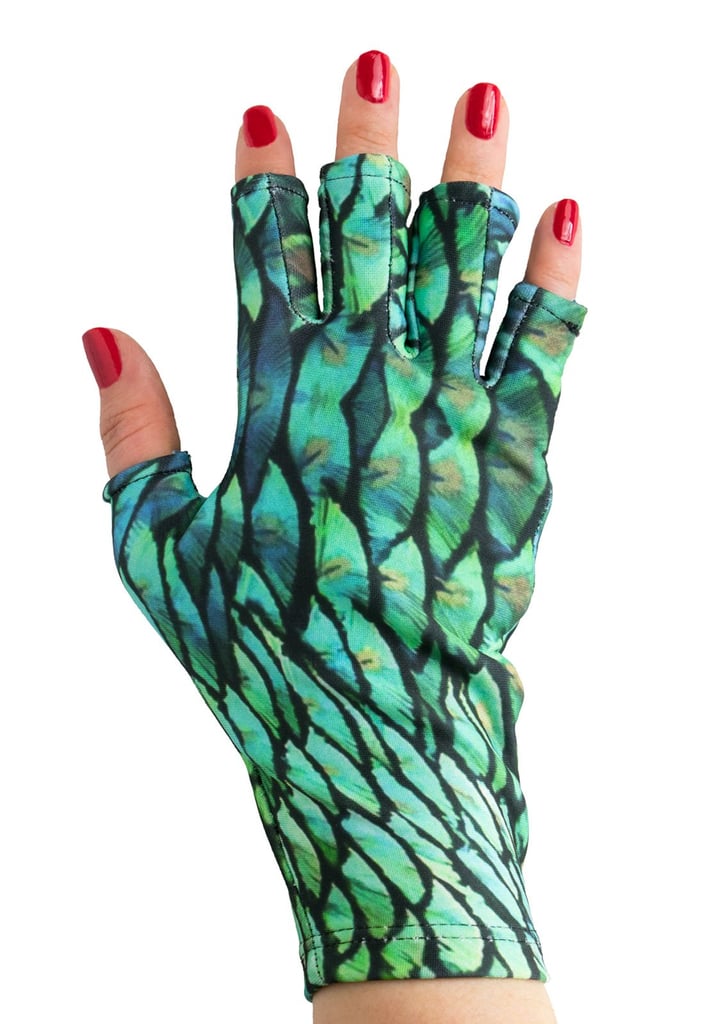

As you progress through the volume, the supports can be adjusted to protect the book's vulnerable joints.
Waring gloves to preserve old manuscripts full#
Do not open books with tight bindings to a full 120º angle. A books can be set up at a comfortable 20º angle, with an opening not greater than 120º, the joints fully supported. Most books won't open flat, adjust the height of the cushion supports to find an angle that avoids putting strain on the binding.Listen to the book - does it creak when you open it? The binding may be tight and you may not be able to open the pages fully.Find a suitable size cushion to rest your book, use your hands to form a dip down the centre to rest the spine.Be aware of red rot in leather bound books, the powder can mark pages.Check the bindings are reasonably robust and that the text block is not in danger of permanently separating.
 Visually asses the condition before opening the book - check how fragile the spine looks. If the book is tied together with cotton tape it is a good clue that the spine is damaged. The level of support needed is assessed on a case by case basis and will vary depending on the size, weight and condition of the book. Books will need to be supported by cushions before being opened. Avoid pulling the book out by the top of the spine. If the book is shelved tightly between other books and you are unable to grip the cover, reach one hand behind the book and gently push the book forwards, grasping it with the other hand.
Visually asses the condition before opening the book - check how fragile the spine looks. If the book is tied together with cotton tape it is a good clue that the spine is damaged. The level of support needed is assessed on a case by case basis and will vary depending on the size, weight and condition of the book. Books will need to be supported by cushions before being opened. Avoid pulling the book out by the top of the spine. If the book is shelved tightly between other books and you are unable to grip the cover, reach one hand behind the book and gently push the book forwards, grasping it with the other hand. 
Support the book from underneath if it's heavy.
If you take a book from the shelves grasp it mid-spine with the covers between thumb and fingers, avoiding gripping the spine. The spine is most vulnerable to damage as it is the mechanical part of the book. Hold and carry books from the fore edge, not the spine. The cookie is set by the GDPR Cookie Consent plugin and is used to store whether or not user has consented to the use of cookies. The cookie is used to store the user consent for the cookies in the category "Performance". This cookie is set by GDPR Cookie Consent plugin. The cookie is used to store the user consent for the cookies in the category "Other. The cookies is used to store the user consent for the cookies in the category "Necessary". The cookie is set by GDPR cookie consent to record the user consent for the cookies in the category "Functional". The cookie is used to store the user consent for the cookies in the category "Analytics". These cookies ensure basic functionalities and security features of the website, anonymously. Necessary cookies are absolutely essential for the website to function properly. The white fabric contains no dyes that could stain the book, and they show dirt easily, so you know when it’s time for a new pair. The purpose of wearing white cotton gloves is to provide a safe, soft barrier between your dirty, oily hands and the rare book you’re using. Portland State University Library Special Collections follows their advice to handle most rare and valuable books with clean, dry hands.” And gloves often carry far more dirt than clean hands. “According to the Library of Congress, wearing gloves while handling antiquarian books may do more harm than good. News articles highlight the problems archivists had trying to recover and salvage records after … Why do historians wear gloves? Other reasons that archivists may wear gloves while handling collections is actually to protect the archivist-either from dry/ cracking skin, paper cuts, or for more substantial reasons, such as handling moldy materials. READ ALSO: How much do biometric locks cost? Do archivists wear gloves? In the middle of summer, Frosties (as we call ourselves) sometimes have to wear gloves and two pairs of socks just to keep our blood vessels under control. Air conditioning, stress, even just holding a cold glass can trigger a Raynaud’s attack. We have a condition called Raynaud’s Syndrome. We like to keep it simple in the field, as conditions can be rough. Is it necessary to use gloves to handle artefacts during our glacial archaeological fieldwork? The answer to that is no, unless it is freezing, and we keep our gloves on for protection against the cold. 
The professors and the visiting archivists all had the same answer: Don’t wear gloves unless you’re handling photographs or a material that could be harmed by fingerprints. Should you wear gloves when handling old documents? 5 Why do archaeologists wear scarves around their neck?.1 Should you wear gloves when handling old documents?.








 0 kommentar(er)
0 kommentar(er)
